Aquarium Long Term Planning
Life Spans of 5 Popular Saltwater Fish
Participating in a hobby takes a certain level of investment. This is definitely true for those who keep aquariums. It includes not only the monetary investment (of aquatic life, aquariums, food, aquarium supplies, and equipment), but an investment of time and emotions as well. But saltwater aquarists do it in order to reap the reward of a job well done, which is spending time viewing the spectacular aquascapes that are created. Saltwater fish are living creatures that elicit emotion and add so much aesthetic value to home environments. And we would not have it any other way!
Many saltwater hobbyists get attached to their aquatic life and want to provide them as long a life as possible. Understanding the depth of commitment that is needed when obtaining a specific species is the first step. Although this may not be the primary reason for selecting a particular saltwater fish, knowing how long they can live helps hobbyists to develop long term aquarium system goals.
How do I help my fish live a long life?
When sourcing saltwater fish, it is important to purchase healthy specimens. Count on quality suppliers like LiveAquaria® that have on-staff husbandry professionals who work diligently to provide their customers the healthiest specimens possible. Doing so will help give your aquatic life the best start for a healthy and long life.
The biggest contributing factor to the longevity of your saltwater fish is to provide them the best care possible. Follow established guidelines such as the Care Statistics provided by LiveAquaria® to plan and maintain optimal conditions. Learn what size tank is best for your specimen, maintain the required water parameters, create an environment that replicates their natural environment, select compatible tankmates, perform aquarium maintenance, and treat sick and injured fish as soon as possible. In addition, select appropriate food and feed it according to the recommended schedules. LiveAquaria® has a host of articles to help aquarists achieve success.
Let us examine estimated longevity of five popular saltwater fish housed in an aquarium environment. Aquatic hobbyists should remember that if purchased as adults, some fish have already spent part of their life with suppliers before they make their way to their new homes.
What are the suggested parameters for saltwater tanks?
| Parameter |
Suggested Level Fish Only |
Suggested Level FOWLR |
Suggested Level Reef |
| Specific Gravity |
72-78°F |
72-78°F |
72-78°F |
| pH |
8.1-8.4 |
8.1-8.4 |
8.1-8.4 |
| Alkalinity |
8-12 dKH |
8-12 dKH |
8-12 dKH |
| Ammonia (NH3) |
Undetectable |
Undetectable |
Undetectable |
| Nitrite (NO2) |
Undetectable |
Undetectable |
Undetectable |
| Nitrate – Nitrogen (NO3) |
< 30.0 ppm |
< 30.0 ppm |
< 1.0 ppm |
| Phosphate (PO4) |
< 1.0 ppm |
< 1.0 ppm |
< 0.2 ppm |
| Calcium |
350-450 ppm |
350-450 ppm |
350-450 ppm |
| Magnesium |
1150-1350 ppm |
1150-1350 ppm |
1250-1350 ppm |
| Iodine |
0.04-0.10 ppm |
0.04-0.10 ppm |
0.06-0.10 ppm |
| Strontium |
4-10 ppm |
4-10 ppm |
8-14 ppm |
How long do saltwater fish live?
Longevity varies by genus, species, and even among individual specimens. The following are guidelines, and most often depend on the care they receive.
How long can Angelfish live in my aquarium?
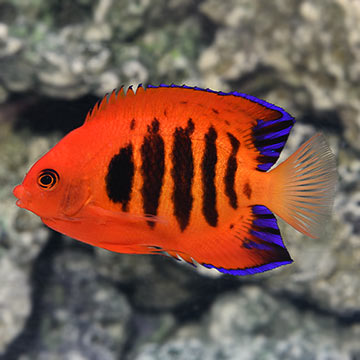
Angelfish can live up to 15 years, but 5-10 years is more common.
Larger Angelfish varieties tend to live longer than the Dwarf species. For example, the Dwarf Flame Angelfish can live 5-7 years old, other species can live up to 15 years with the proper care.
Large Angelfish are among the most popular fish for the home saltwater aquarium, and most marine angelfish adapt well to captivity. It is advisable not to introduce Angelfish from the same genus into one aquarium, as fighting usually occurs.
Dwarf Angelfish are among the most colorful and popular marine angel fish species. Growing to about four inches in length, these mild tempered fish adapt well to captivity and are compatible with many other species.
How long can Butterflyfish live?
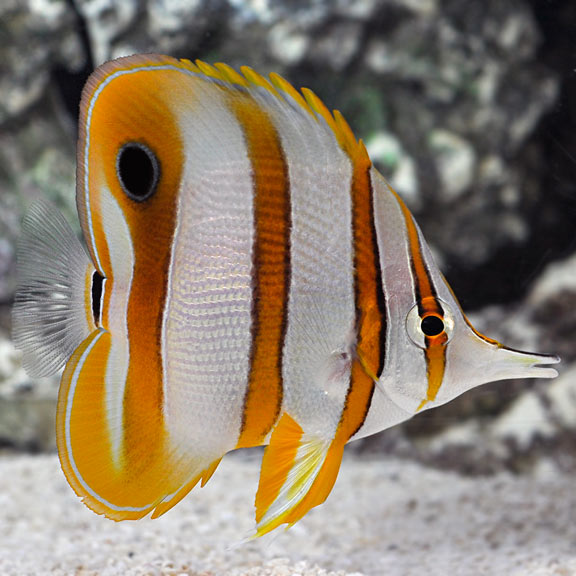
Butterflyfish can live up to 10 years old in captivity.
Butterflyfish reach an adult size of six inches in captivity. The captive care of this group of fish varies a great deal due to the special feeding requirements (live coral polyp) of some species. A large tank with ample hiding places is needed to successfully keep many Butterflyfish species.
How long do Tangs live?
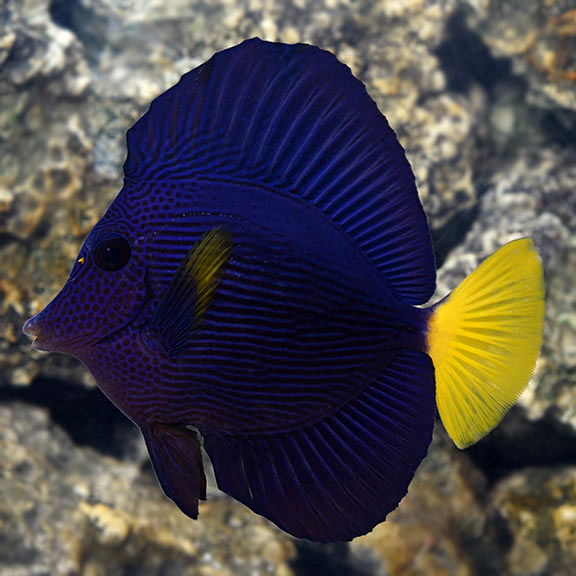
Tangs (Surgeonfish, Doctor Fish) length of life depends on the species but can live for decades. Most commonly they live 5-10 years, with many living in the 8-10 year range.
Tangs make a wonderful addition to the reef or fish only aquarium. If more than one species of Tang or Surgeonfish is going to be kept, introduce different genera along with different sized specimens simultaneously to limit aggression.
What are life expectancy rates for Clownfish?
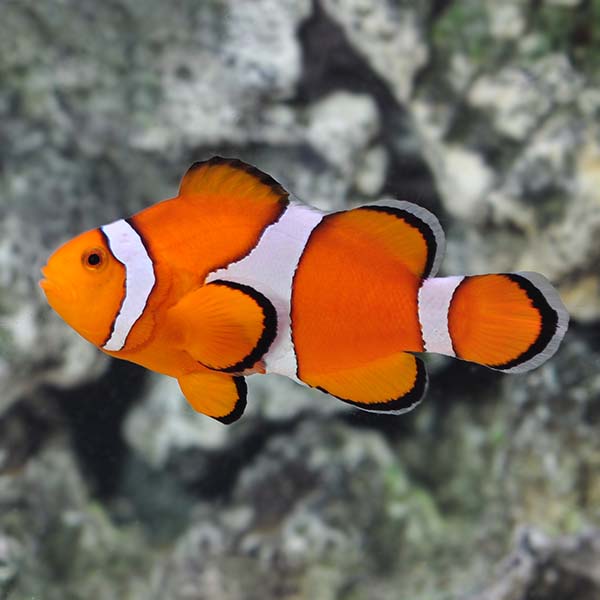
Clownfish in an aquarium environment can live 3-10 years, with some astonishing stories of specimens living up to 20 years with expert care.
The average size of Clownfish is three inches, and most are brightly colored with white stripes on the head or side of the body. This group of fish is extremely hardy and is well suited to life in the average aquarium. Ideally, Clownfish should be purchased in small groups consisting of one species and introduced to the aquarium simultaneously.
People in the industry disagree on whether captive raised Clownfish or wild caught ones live longer. Clownfish removed from their natural environment undergo a level of stress that captive raised ones do not, but the process of breeding to produce particular characteristics may overshadow the need of developing them for a long life.
Do Wrasses live a long time?
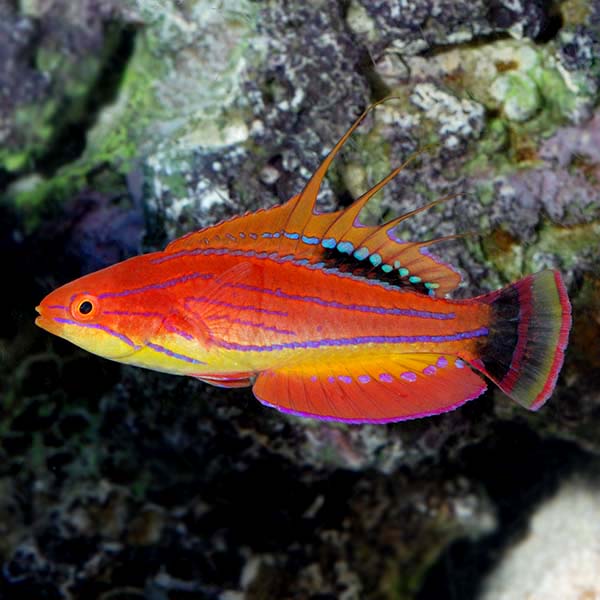
Most Wrasse live between 3 and 8 years. Longevity is based on the species. For example, Green Bird Wrasses may have average life spans on the lower spectrum of the range, whereas Humphead Wrasses (which are endangered and not an appropriate aquarium fish) can live up to 30 years.
Reef Safe Wrasses will not pick at nor consume corals or most invertebrates. They are some of the most colorful of the moderately-sized saltwater fish that can be incorporated into a reef aquarium. Many of these Wrasse species are very active by nature and are nearly always swimming out in the open, adding activity and beauty to either a reef or peaceful fish-only aquarium
Fish Only Wrasses are very beautiful and active fish that will make a wonderful addition to any moderate to large sized marine fish only aquarium. Because of their diet in nature, these fish are ill-suited for a reef aquarium, as they will readily consume most crabs, snails and tube worms. The ideal aquarium will have plenty of live rock for hiding and a sandy substrate for burrowing into at night.
There is no evidence that Reef Safe Wrasses live longer than Fish Only Wrasses, or the reverse.
In Closing
Aquarists focused on long term planning for their saltwater tank, FOWLR setup, or reef aquarium would do well to consider the lifespan of the saltwater fish they plan to bring into their home aquarium. We hope the information presented here will inspire and encourage saltwater hobbyists to learn as much as they can about their new additions and strive to provide the conditions that will provide each one a long and healthy life.
Related Articles